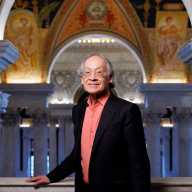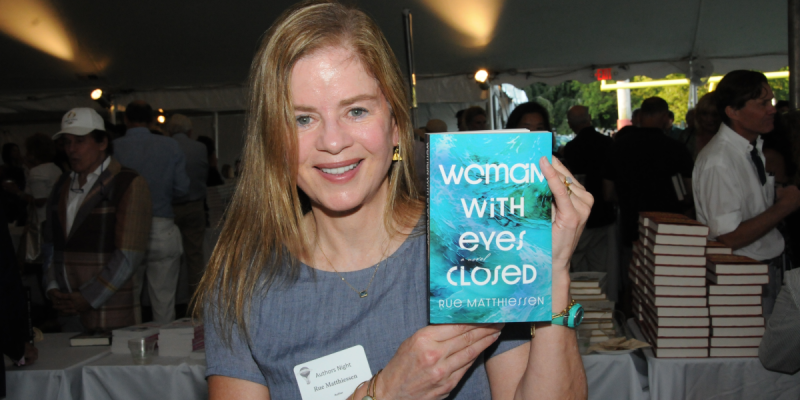By Lenore Skenazy
Mr. Rogers was the host of a half hour of calm for kids from 1968 until 2001. On other kids shows you could find flying squirrels, falling pianos, and grouches in garbage cans. But tune in to “Mister Rogers’ Neighborhood” and you found a soft-spoken. middle-aged guy, forever changing into his cardigan, who spent his days talking and sometimes singing with a worn-out sock puppet and some equally low-key, kindly neighbors.
To many kids, including (I am now ashamed to say) me, it looked like the most boring place on Earth. To others, a new documentary reveals, it was a haven, a hearth, free therapy, the spark of god, and a warm, loving family all rolled into one.
It could be what we need today.
The documentary “Won’t You Be My Neighbor?” features footage going back to the PBS show’s beginning — it first aired on the network in 1968 — when Mr. Rogers was about to go to divinity school when he happened to see some children’s programming and couldn’t believe it. Explosions? Pie throwing? Companies pushing kids to buy toys? Mr. Rogers was so incensed, he put school on hold to start a new kind of kiddie television. He’d use half an hour to show kids old movies and other educational material.
Except that back then, the films he was screening were so old they kept breaking or burning up. Mid-show there was nothing on the screen. That’s when he grabbed a puppet and started talking to the kids instead, necessity being the puppet of invention.
As he pulled together his new show, Mr. Rogers — he does have a first name, it’s Fred — started studying child development. He learned something he already knew in his heart: that kids are full human beings with a full range of emotions, including the darkness childhood holds. But it is possible all that training wouldn’t have made Mr. Rogers so attuned to kid’s wonder and sorrow had he not experienced it himself.
He was, he says, sick as a child. Born in 1928, he spent many long days in bed convalescing. He had to make up stories — characters, songs — to keep himself occupied.
Then, too, before he hit high school and slimmed down, he’d earned the name, “Fat Freddy.” A photo of him shows why. Nobody wants to be bullied, of course, but as one of the interviewees notes in the film: It’s possible that without Fat Freddy, there wouldn’t have been a “Mr. Rogers” either.
The yin and yang of childhood is something Mr. Rogers was not afraid to talk about, making him outrageously radical even while many of us dismissed him as a goody-goody. This is a man who did an entire week of programs about divorce, and another on death — for kids! In an era when many whites were unwilling to swim in the same pool as African-Americans — so hard to imagine today — Mr. Rogers put a little kiddie pool on the set and cooled his feet in it. When the neighborhood “cop” came by, played by African-American Francois Scarborough Clemmons, Mr. Rogers invited him to cool his feet off, too. The camera, as straightforward as a curious child, bends over to look at the two sets of feet – one black, one white – enjoying the water together.
A moment like that, so simple and so powerful, is almost a prayer. But despite the divinity degree Mr. Rogers eventually earned, he knew that preaching is… preachy. So instead he just exemplified the kind of respect and love he wanted everyone to give their neighbors, even the littlest ones.
In one of the movie’s most moving scenes, he welcomes a little boy, Jeffrey Erlanger, who uses a motorized wheelchair. Instead of ignoring the device, Mr. Rogers asks about it. But then instead of focusing on the boy’s disability, they chat for awhile about highs and lows and sing a song together:
“It’s you I like. It’s not the things you wear. It’s not the way you do your hair. But it’s you I like, the way you are right now, the way down deep inside you. Not the things that hide you. It’s you I like.”
Mr. Rogers doesn’t seem to have lectured his little viewers about the evils of bullying, the importance of diversity, or any of the other issues schools are hitting head-on today. That’s because when you see the worthiness in everyone you interact with, there can’t be bullying. Diversity? That’s a given — we’re all people.
Fred Rogers knew the simple key to solving the earth’s problems. “Everyone longs to be loved. And the greatest thing we can do is to let people know that they are loved and capable of loving.”
The key is not to preach or teach, it’s to love.
And for what it’s worth, now I love Mr. Rogers.
Lenore Skenazy president of Let Grow, a nonpartisan group promoting childhood independence and resilience, and founder of Free-Range Kids.


































